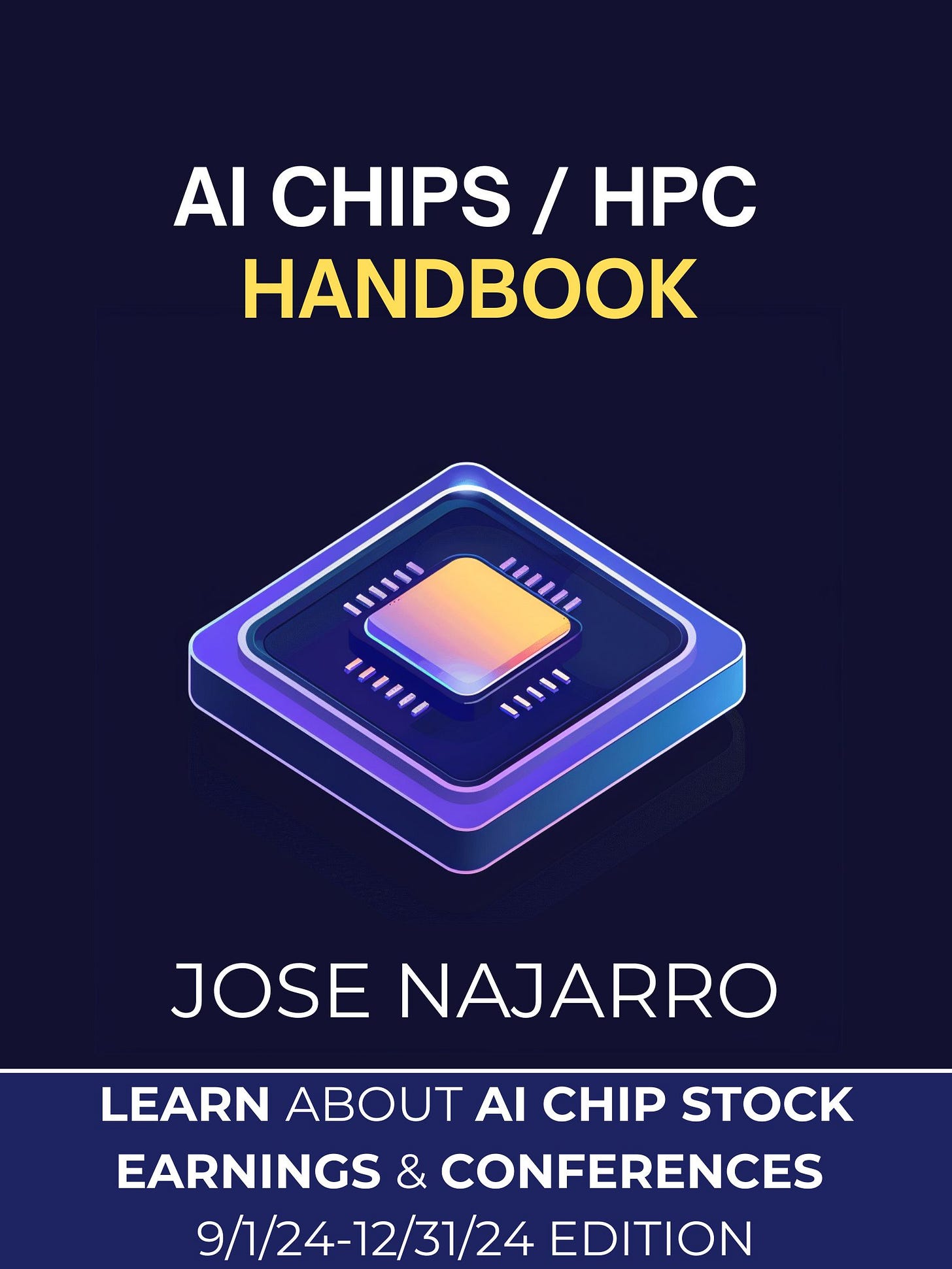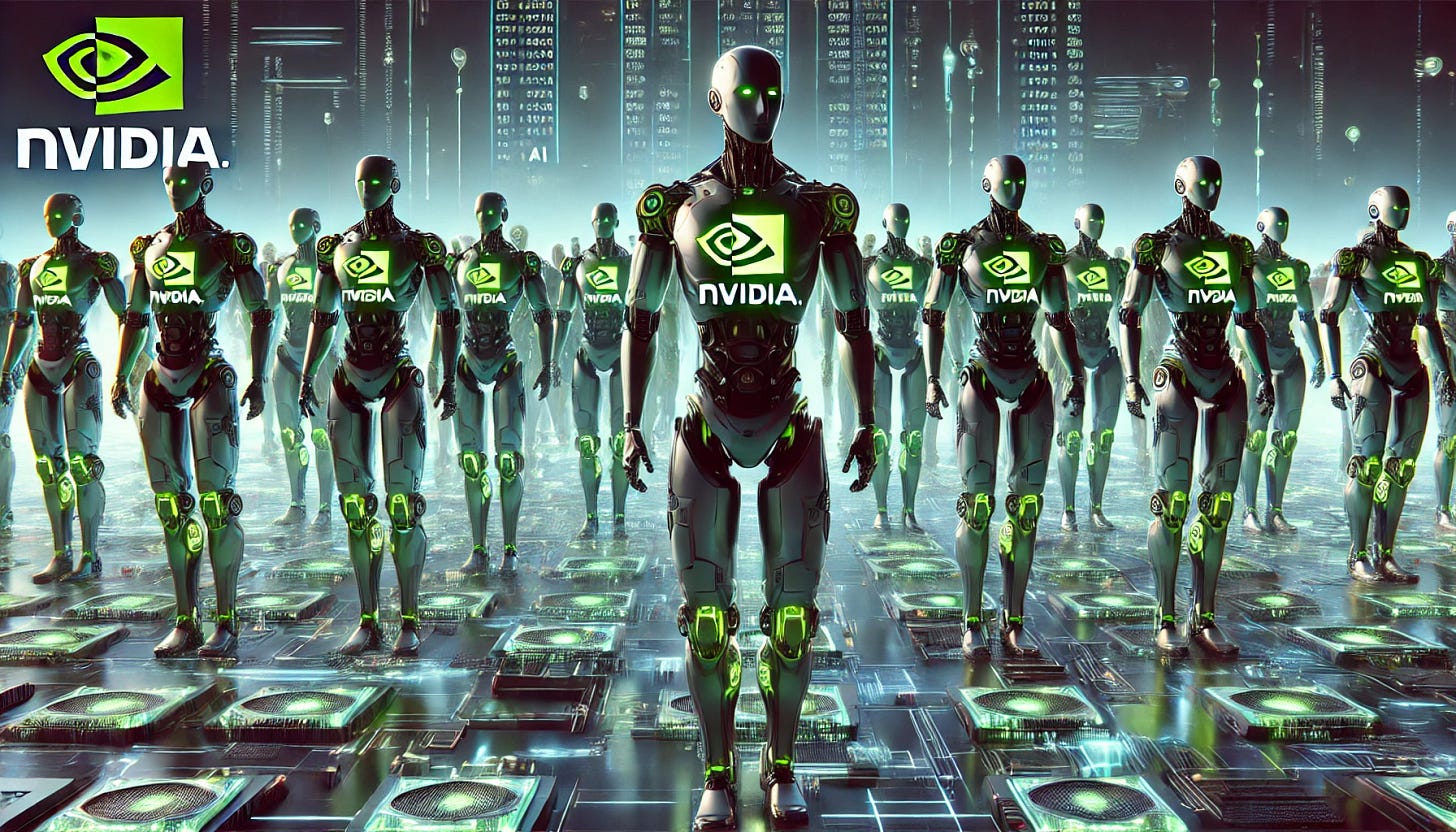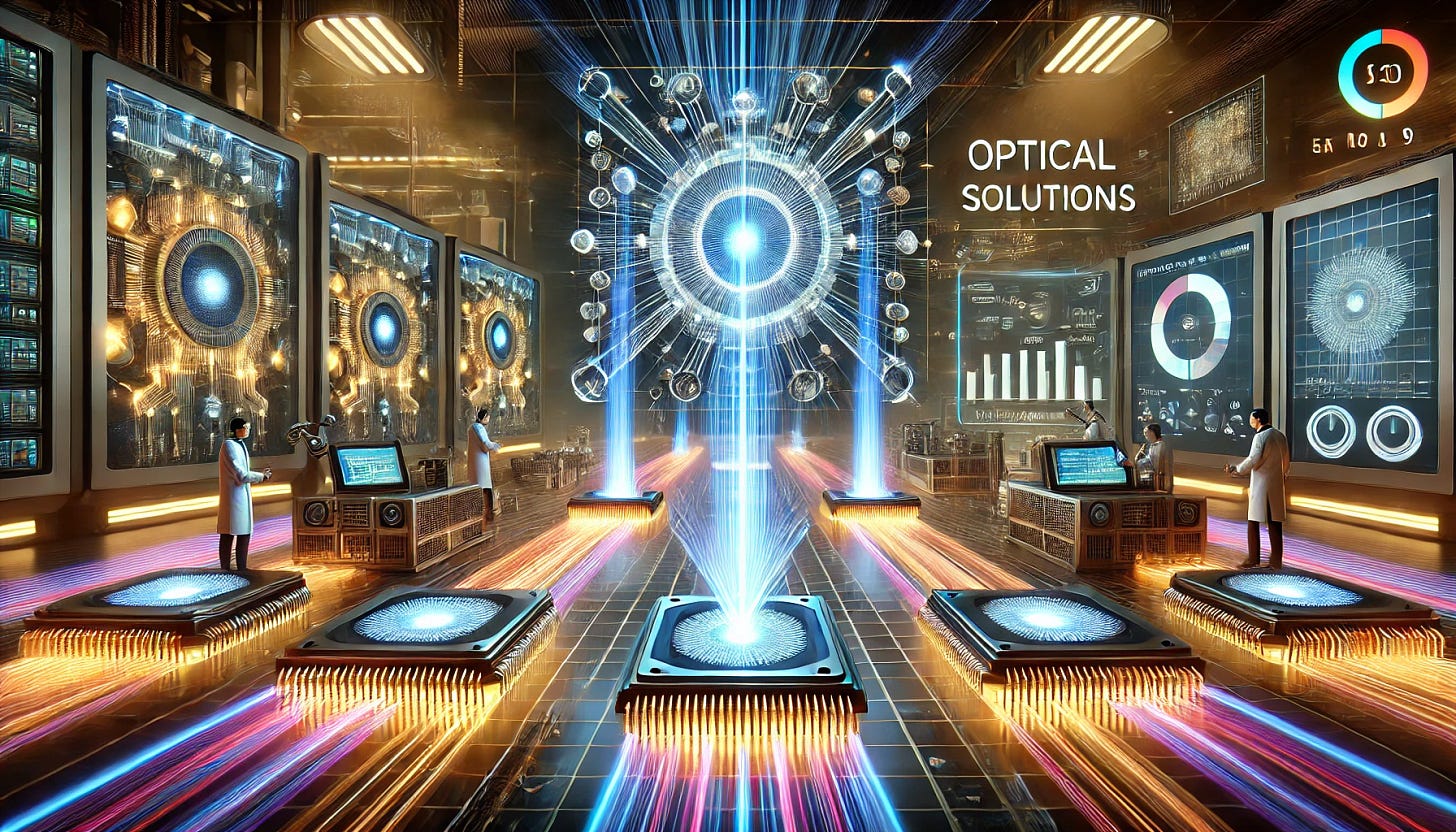Welcome, AI & Semiconductor Investors.
NVIDIA’s latest robotics push propels us closer to an age of “robot natives,” showcasing breakthrough Project GR00T workflows that promise to redefine human-machine interaction.
Wondering how TSMC’s 1.6T optical leap or NVIDIA’s Run:ai deal might shape the AI market this year?...
What The Chip Happened?
⚠️ Seals the Run:ai Deal, Takes GPU Orchestration to New Heights
🤖 Unlocking the Next Robot Revolution
🚀 From 1.6T Optics to U.S. 4nm: TSMC’s Transformational Roadmap
Read time: 6 minutes
Nvidia (NASDAQ: NVDA)
⚠️ Seals the Run:ai Deal, Takes GPU Orchestration to New Heights
What The Chip: Nvidia just finalized its acquisition of Run:ai, according to Run:ai’s official press release. This move boosts Nvidia’s portfolio with advanced Kubernetes-based orchestration software for GPU clusters — setting the stage for more efficient AI infrastructure management.
Details:
🔧 Integration of Orchestration Tools: Run:ai’s platform helps enterprises share, monitor, and optimize GPU usage across on-prem, cloud, and hybrid environments.
🏗️ Open-Source Expansion: Run:ai plans to open source its software, further extending GPU management capabilities across the entire AI ecosystem.
💬 Leadership’s Take: “Run:ai has been a close collaborator with NVIDIA since 2020,” said Omri Geller (Run:ai cofounder and CEO), who emphasized their shared mission of maximizing infrastructure efficiency.
🖥️ Improved Utilization: Customers can pool GPU resources more flexibly, slicing or combining GPUs for different tasks, potentially boosting performance and cutting costs.
⚠️ Potential Challenges: With more integration comes higher complexity in scheduling and software support, which could require careful rollout and additional training for IT teams.
🔮 Future Synergy: Nvidia will continue supporting Run:ai’s products under the same model, with deeper integration for NVIDIA DGX Cloud, bringing open frameworks plus advanced orchestration under one roof.
Why AI/Semiconductor Investors Should Care: Nvidia’s consolidation of Run:ai’s orchestration technology broadens its AI ecosystem and could enhance the ROI of existing GPU investments. This acquisition signals Nvidia’s ambition to keep its position in the AI infrastructure race by delivering efficiency, flexibility, and open-source innovation — key factors that can drive sustained growth in a competitive market.
Moore Semiconductor Investing
📗 Unlock Q3 Semiconductor Earnings --- 50% OFF
What The Chip: Get a front-row seat to the financials shaping the semiconductor industry. This continuously updated e-book by Jose Najarro distills the latest quarterly insights—from wafer production trends to AI chip breakthroughs—into a single comprehensive resource.
Details:
🔵 Dynamic Updates: Start with giants like TSMC and ASML, then expand to 30+ companies as their Q3 2024 earnings roll in. Already covering over 30 companies.
🔵 Huge Value for Half the Price: For a limited time, the e-book is discounted from $49.07 USD to $24.54 USD, offering a robust market guide at a significant value.
🔵 Expert Analysis: Curated by Jose Najarro (Master’s in Electrical Engineering, contributor at The Motley Fool), delivering reliable, accessible breakdowns.
🔵 Key Metrics & Trends: Follow critical financial indicators, market shifts, and executive comments shaping the sector’s trajectory.
🔵 Broad Coverage: From traditional chipmakers to cutting-edge AI semiconductor players, get the full picture as it emerges.
Why AI/Semiconductor Investors Should Care: This evolving earnings handbook gives you a strategic edge. Understanding quarterly earnings data is crucial for gauging industry health, discovering new growth leaders, and aligning your investment approach with emerging technological waves.
Disclaimer: For educational and informational purposes only. Not financial advice. Consult with a qualified professional before making any investment decisions.
Nvidia (NASDAQ: NVDA)
🤖 Unlocking the Next Robot Revolution
What The Chip: Nvidia just took another bold step toward “ubiquitous Physical AI,” according to a post by Jim Fan, a Senior Research Manager of GEAR Lab at Nvidia. With Project GR00T and an array of new robotics software frameworks, Nvidia aims to make humanoid robots as pervasive as smartphones.
Details:
🤖 Humanoids on the Rise: Jim Fan says we’re “the last generation without advanced robots everywhere” and believes humanoids will someday cook gourmet meals and drive kids to school.
🛠️ “Brownfield-able” Advantage: CEO Jensen Huang calls humanoid robots the most “brownfield-able,” meaning they can adapt to existing human environments right away — a key factor for mass deployment.
⚙️ Project GR00T Workflows: Nvidia introduced tools like GR00T-Mimic, GR00T-Dexterity, and GR00T-Mobility to help developers tackle the complexity of locomotion, control, and perception in humanoid robots.
☁️ Simulation Power: With Isaac Lab, developers can train robots in ultra-realistic simulations before deploying them in real-world environments, reducing the cost and risk of physical prototyping.
✨ Diverse Use Cases: Nvidia sees three big robot categories scaling quickly: autonomous cars, drones, and humanoids — all requiring advanced AI chips and orchestration to function in our existing world.
🏭 OpenUSD & Domain Randomization: By generating thousands of random scenes in simulation, these workflows help robots learn to open doors, navigate cluttered spaces, and manipulate objects with human-like dexterity.
Why AI/Semiconductor Investors Should Care: Nvidia’s latest robotics push blends advanced AI hardware, simulation software, and generative AI in a single platform, opening a path for large-scale adoption of humanoid robots. As demand grows for real-world AI deployments, the company’s chip sales and ecosystem influence could expand, strengthening its position at the forefront of the next robotics wave.
TSMC (NYSE: TSM)
🚀 From 1.6T Optics to U.S. 4nm: TSMC’s Transformational Roadmap
What The Chip: TSMC is making major strides on two fronts: pushing co-packaged optics (CPO) to achieve 1.6T optical transmission by late 2025, and expanding its 4nm production capacity at its Arizona facility. According to the Economic Daily News, TSMC’s CPO solutions could see Broadcom and NVIDIA as early adopters, while its U.S. fab aims to serve Apple, AMD, and Qualcomm — though with higher pricing than in Taiwan.
Details:
🔮 Silicon Photonics Surge: TSMC’s recent milestone in integrating CPO with advanced packaging (CoWoS or SoIC) boosts AI and HPC, eliminating copper interconnect limitations. Sample deliveries kick off in early 2025, with mass production ramping in H2 2025.
⚙️ Broadcom & NVIDIA: Industry sources tip these two as TSMC’s first big CPO customers, leveraging 3nm micro ring modulator (MRM) technology for optical signaling.
⚡ Arizona 4nm Rollout: The new U.S. fab is set to produce 20,000 wafers per month at 4nm, starting H2 2025. Clients like Apple, NVIDIA, AMD, and Qualcomm stand to benefit, albeit at roughly 30% higher production costs than in Taiwan.
⌛ Phase 1 & Phase 2: While Phase 1 focuses on 4nm, Phase 2 points to a possible 2nm mass-production timeline by 2028. Some uncertainty remains around tech-transfer disputes between the U.S. and Taiwan.
♻️ Pricing & Supply Chain: Building a robust semiconductor supply chain in the U.S. has proven expensive. The 30% cost premium partly stems from raw material availability and yield challenges.
Why AI/Semiconductor Investors Should Care: TSMC’s dual push into silicon photonics and U.S.-based advanced node production highlights a pivotal shift in how high-performance chips will be built and sourced. This strategic expansion could significantly impact AI and HPC markets, from cost considerations for big-name buyers to potential new revenue streams for TSMC. For investors, TSMC’s ability to navigate these complex dynamics — from co-packaged optics to a pricey Arizona fab — may define the next era of semiconductor innovation.
Youtube Channel - Jose Najarro Stocks
Semiconductor Q3 Earnings Book — 50% OFF
X Account - @_Josenajarro
Disclaimer: This article is intended for educational and informational purposes only and should not be construed as investment advice. Always conduct your own research and consult with a qualified financial advisor before making any investment decisions.





